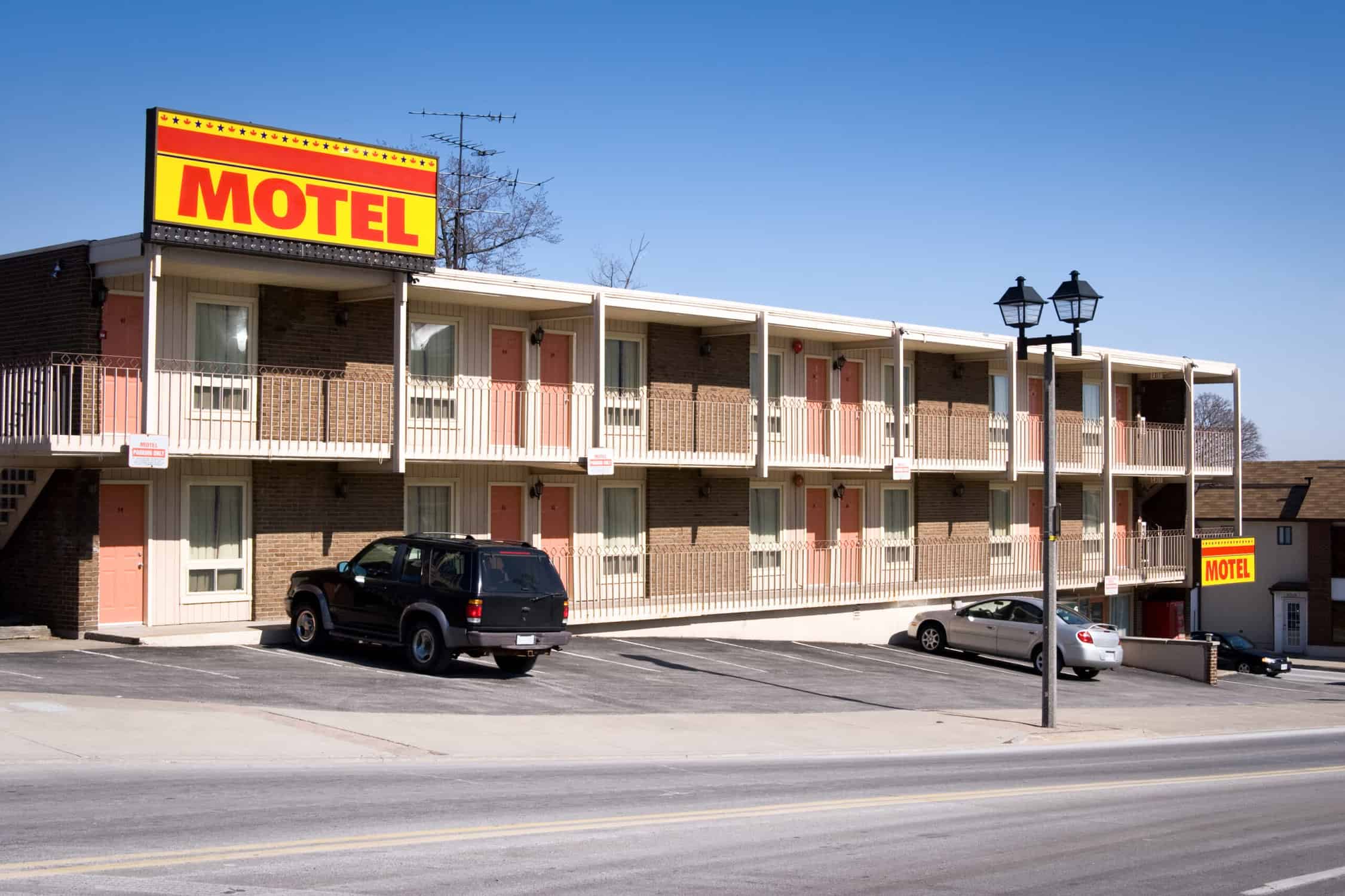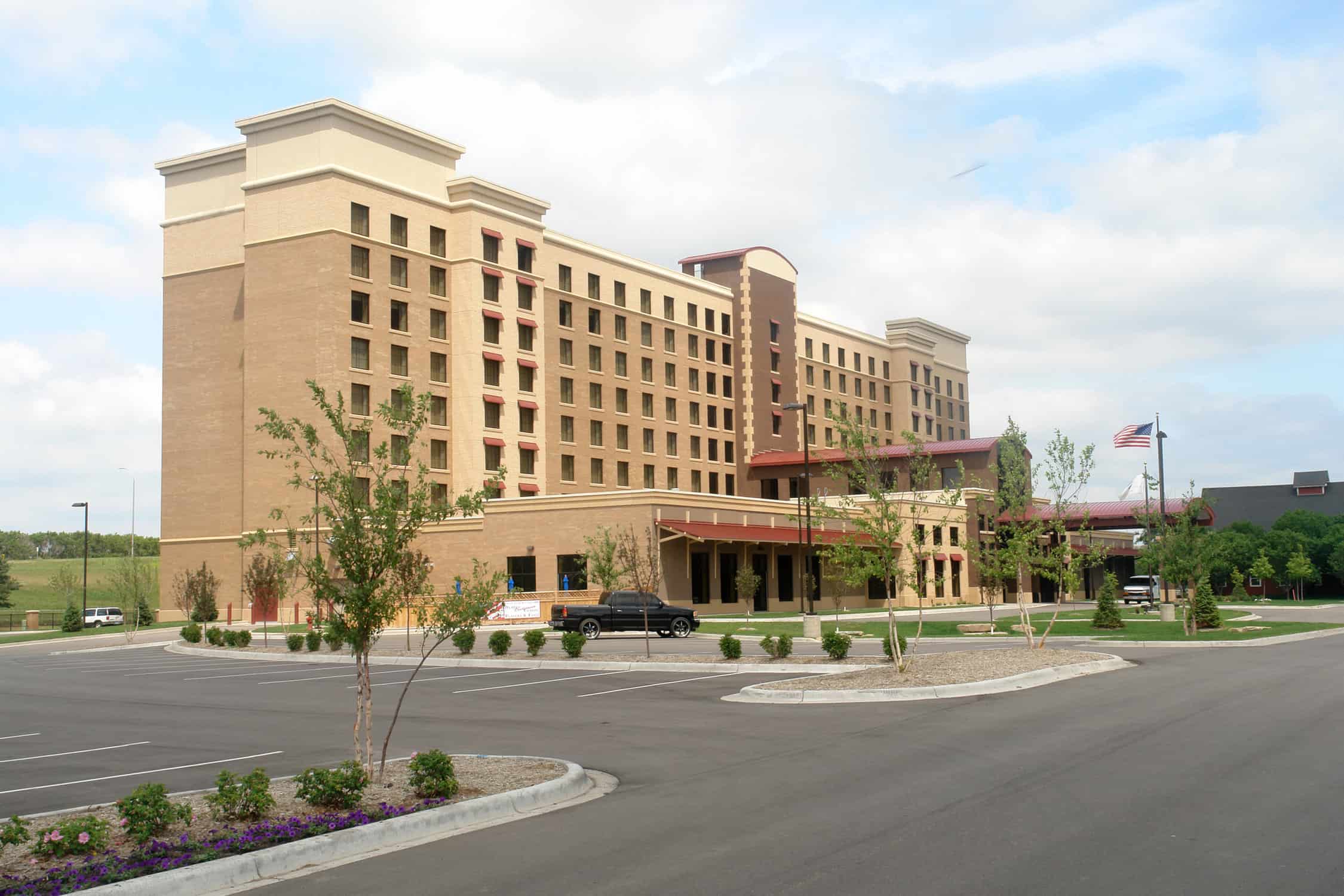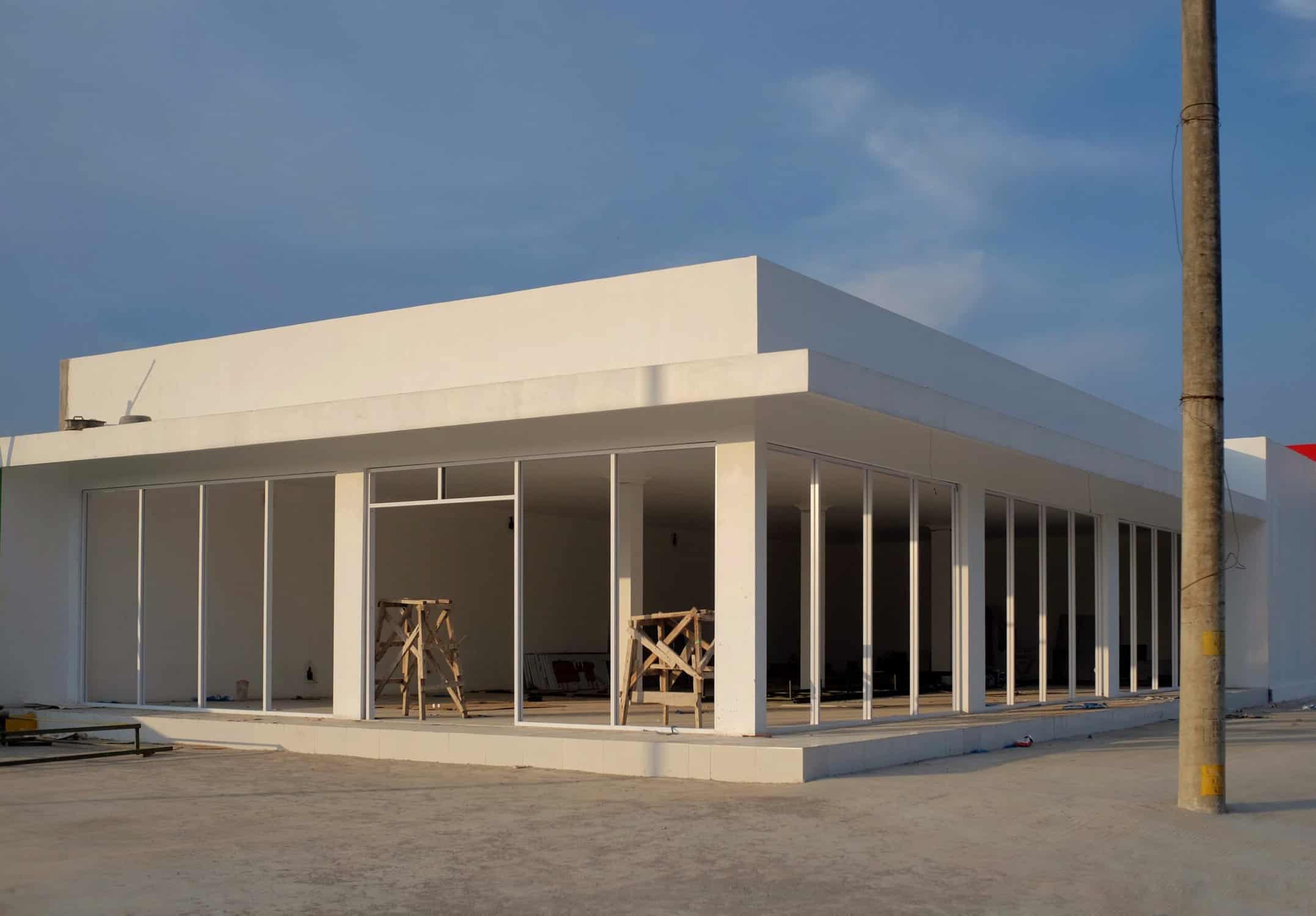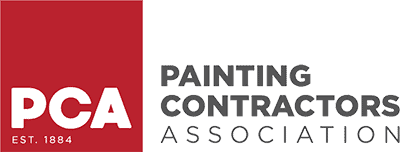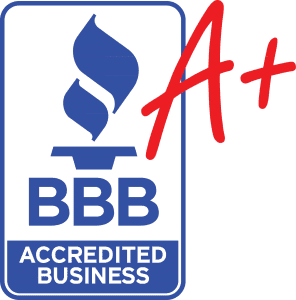Your commercial building’s exterior sends a message—long before anyone walks through the door. Whether you’re managing a retail store, medical clinic, or warehouse, faded paint or peeling trim signals neglect, which can deter clients, tenants, or partners.
Full repaints are necessary every 5–10 years, depending on materials and climate—but in between, seasonal touch-ups offer a cost-effective way to keep your property looking sharp and structurally sound.
This guide outlines what seasonal touch-ups involve, why they matter, where they have the biggest impact, and how smart business owners use them to reduce repair costs, preserve property value, and maintain a polished brand presence year-round.
What Are Seasonal Touch-Ups?
Definition and Scope
Seasonal touch-ups are small-scale, targeted exterior maintenance efforts. They’re done to protect surfaces, extend the life of a full paint job, and keep high-visibility areas sharp and clean. Unlike full repaints, they focus only on zones showing early signs of failure, discoloration, or environmental damage.
Types of Tasks Included
-
Repainting faded trims, sills, doorframes, and color-coded safety zones
-
Recoating metal handrails and bollards after rust removal
-
Touching up signage, logos, or wayfinding paint
-
Sealing hairline stucco cracks or wood splits
-
Addressing mildew or stains with cleaning and recoating
-
Repainting areas affected by roof leaks, sprinklers, or bird droppings
Timing and Frequency
Touch-ups are typically planned seasonally to align with predictable wear patterns:
-
Spring: After freeze-thaw cycles, snowmelt, and salt exposure
-
Summer: High-UV surfaces often fade or chalk
-
Fall: Pre-winter crack sealing and waterproofing
-
Winter: In mild regions, small-patch touch-ups and mildew treatment
Why It Matters—Functional and Business Benefits
Protect Building Materials from Long-Term Damage
Your building’s exterior takes a beating from sun, rain, wind, and seasonal shifts. Paint acts as a shield—but once it starts to break down, that shield weakens fast. Seasonal touch-ups keep protective coatings intact by addressing problem spots early, before damage spreads.
Seasonal touch-ups stop this cycle in its tracks. By sealing cracks, repainting sun-faded areas, and recoating moisture-prone zones, you prevent costly deterioration—and avoid major structural headaches later on.
Extend the Life of a Full Paint Job
A full commercial repaint is a major investment. Depending on the size and materials, it can cost tens of thousands of dollars. But like oil changes for a vehicle, seasonal touch-ups offer a way to keep that investment working longer.
On average, strategic touch-up work can extend the life of an exterior paint job by 2 to 5 years. That’s especially true on surfaces facing direct sun, near ground-level landscaping, or exposed to heavy foot traffic.
By keeping minor issues from becoming major failures—such as repainting trim before peeling exposes bare wood—you can delay the need for a full repaint while preserving the coating system’s integrity.
And it’s not just about looks. Paint provides UV resistance, moisture protection, and mildew resistance. Seasonal touch-ups ensure those protective properties are maintained between major paint cycles.
Preserves Professional Appearance and Builds Trust
Your exterior is the first thing clients, tenants, and employees see. Seasonal touch-ups help ensure that impression is always clean, current, and well cared for.
Faded paint, patchy signage, or flaking trim sends the wrong message. Even if your operations run smoothly inside, a worn-down exterior implies neglect—or worse, decline.
Keeping things fresh signals that your business is attentive, successful, and committed to quality. This matters across sectors:
-
Retail: Customers are more likely to walk in—and return—when storefronts feel inviting and well-maintained.
-
Property Management: Consistent upkeep improves tenant retention and lease renewals.
-
Healthcare and Professional Services: Clean, crisp exteriors reinforce patient or client confidence.
-
Offices and Headquarters: A polished appearance reflects well on your brand’s identity and professionalism.
Seasonal touch-ups maintain that curb appeal year-round, without the downtime or cost of a full repaint.
Manages Maintenance Costs and Maximizes ROI
Seasonal touch-ups are a smart financial decision. They’re low-cost compared to full repainting—and they help you avoid even bigger expenses down the line.
Here’s why the ROI works in your favor:
-
Prevention is cheaper than repair. Repainting a doorframe is much more affordable than replacing water-damaged trim or restoring interior mold damage caused by a leak.
-
Touch-ups are faster. Most can be completed in one or two days, minimizing disruption to tenants or customers.
-
They’re often tax-deductible. Many seasonal touch-up services qualify as maintenance expenses, which can be written off the same year. In contrast, capital improvements may need to be depreciated over several years.
Regular touch-ups mean fewer surprises, fewer emergencies, and better long-term budget control. For many commercial property owners, that’s reason enough to schedule them as part of their seasonal facility plan.
Most Vulnerable Areas That Benefit from Seasonal Touch-Ups
High-Exposure Zones
| Surface Location | Common Issues | Reason for Vulnerability |
|---|---|---|
| South-facing Walls | Color fading, chalking | High year-round UV exposure |
| West-facing Elevations | Peeling paint, cracking | Afternoon sun + heat stress |
| Rooflines & Soffits | Water stains, mildew | Exposure to wind-driven rain |
| Parapets and Ledges | Paint bubbling, cracks | Poor drainage or standing water |
Common Wear Points
-
Entry doors and surrounding trim
-
Bollards and parking lot fixtures
-
Metal handrails, stair edges, and loading ramps
-
Painted curbs or crosswalks (fading from traffic and sun)
-
Signage mounts and poles (especially near sprinklers or foliage)
Specialty Surfaces That Need Attention
-
Stucco: Develops hairline cracks; vulnerable to moisture intrusion
-
Brick & Masonry: Susceptible to efflorescence or mortar deterioration
-
Wood Trim: Often absorbs water near landscaping zones
-
Painted Metal: Can flake, rust, or fade more quickly under UV and moisture
Painted Branding Elements
Logos, directional arrows, or color-coded zones are often the first to fade. Inconsistent branding colors make even a well-maintained building appear out of date or neglected.
Common Business Owner Concerns—and Clear Answers
“Won’t the color look mismatched?”
Professional painters use digital color matching tools or fan decks to closely replicate existing paint. When surface prep is done correctly—cleaning, sanding, and priming—the new paint blends seamlessly with older layers.
“Isn’t this just extra maintenance cost?”
Think of seasonal touch-ups as preventive maintenance. Repainting one doorframe is cheaper than replacing a rotted jamb. Strategic touch-ups save money by avoiding:
-
Full surface repainting
-
Siding or trim replacement
-
Water damage restoration
“How much disruption will it cause?”
Touch-up projects are typically completed in 1–2 days and can be scheduled during:
-
Off-business hours
-
Low-foot traffic days (early mornings, weekends)
-
Specific weather windows (dry, mild conditions)
“Can’t I just pressure wash?”
Pressure washing is great for surface cleaning, but it won’t fix cracked, chalking, or peeling paint. In fact, high-pressure water can remove loose coatings and expose bare substrate, which must then be recoated.
Ideal Schedule for Commercial Exterior Touch-Ups
Frequency Recommendations
| Property Type | Visual Inspections | Touch-Up Frequency |
|---|---|---|
| Retail Strip Centers | Quarterly | 2–3 times/year |
| Industrial Warehouses | Twice/year | Annually or spot-based |
| Medical or Office Facilities | Quarterly | Twice/year minimum |
| Hospitality & Restaurants | Monthly visual walk-throughs | Quarterly recommended |
Seasonal Maintenance Table
| Season | Recommended Tasks | Main Objective |
|---|---|---|
| Spring | Repair salt damage, recoat water-stained areas, seal cracks in wood | Recovery and water protection |
| Summer | Repaint UV-faded surfaces, touch up signage, refresh bollards or railings | Aesthetic preservation under heat |
| Fall | Prep for winter: recoat trim, seal openings, inspect for rot | Weatherproofing and protection |
| Winter | (Mild climates only) Clean mildew, touch-up moisture-prone zones | Moisture management and early damage repair |
Industries That Benefit Most from Seasonal Touch-Ups
Retail and Hospitality
First impressions directly affect customer behavior. Dingy exteriors deter walk-ins and repeat visits. Consistent maintenance supports brand loyalty and customer trust.
Office Parks and Business Campuses
Uniformity across multiple structures communicates professionalism, order, and high-value operations—especially in finance, tech, or legal industries.
Healthcare Facilities
Clean, fresh exteriors support perceptions of cleanliness and hygiene—key factors in patient trust and accreditation readiness.
Warehouses and Industrial Facilities
Exterior wayfinding colors, dock zones, and safety striping wear out from sun and forklift traffic. Seasonal repainting ensures compliance and worker safety.
Property Management Firms
Touch-ups help meet tenant expectations, reduce vacancy rates, and maintain curb appeal for leasing tours and investor visits.
Signs You Should Schedule a Seasonal Touch-Up Now
Look for these red flags:
-
Faded or chalky paint near entrances
-
Cracking or peeling in corners or high-moisture zones
-
Discolored or moldy patches on stucco or siding
-
Water stains under eaves or downspouts
-
Visible rust on painted metal trim
-
Logo or signage colors that no longer match brand palette
-
Increased customer complaints or negative first impressions
Which Paint Products Work Best for Seasonal Touch-Ups?
Selecting the right materials is essential for durability and color fidelity during partial repaints.
Recommended Paints and Primers by Surface Type
| Surface Type | Recommended Product | Notes |
|---|---|---|
| Wood Trim | Sherwin-Williams Duration or Benjamin Moore Aura Exterior | Self-priming, flexible film resists cracking |
| Stucco or Masonry | Benjamin Moore Ultra Spec Masonry or Sherwin-Williams Loxon XP | Breathable, water-resistant, high adhesion |
| Metal Railings & Bollards | Rust-Oleum Protective Enamel or Sherwin-Williams DTM Acrylic Coating | Resists rust, easy recoating |
| Signage & Branding | Benjamin Moore Aura Exterior Low Lustre | High color retention, fade resistance |
| High-Traffic Curbing | Sherwin-Williams Hotline Traffic Paint | Fast-drying, durable against vehicle wear |
Specialty Primers
-
Zinsser Cover Stain: For water-stained or discolored surfaces
-
Corotech Rust Inhibitive Primer: For exposed metal
-
Loxon Conditioner: For porous masonry or stucco prep
Conclusion
Seasonal touch-ups aren’t just aesthetic—they’re a business strategy. They reduce repair costs, preserve asset value, and reflect your professionalism.
From faded logos to flaking trim, every flaw communicates something to clients, tenants, and employees. Smart owners and facility managers take action before small issues become major problems.
Now is the perfect time to inspect and plan. Contact us today to schedule a seasonal paint inspection and receive a personalized maintenance plan tailored to your commercial property.

